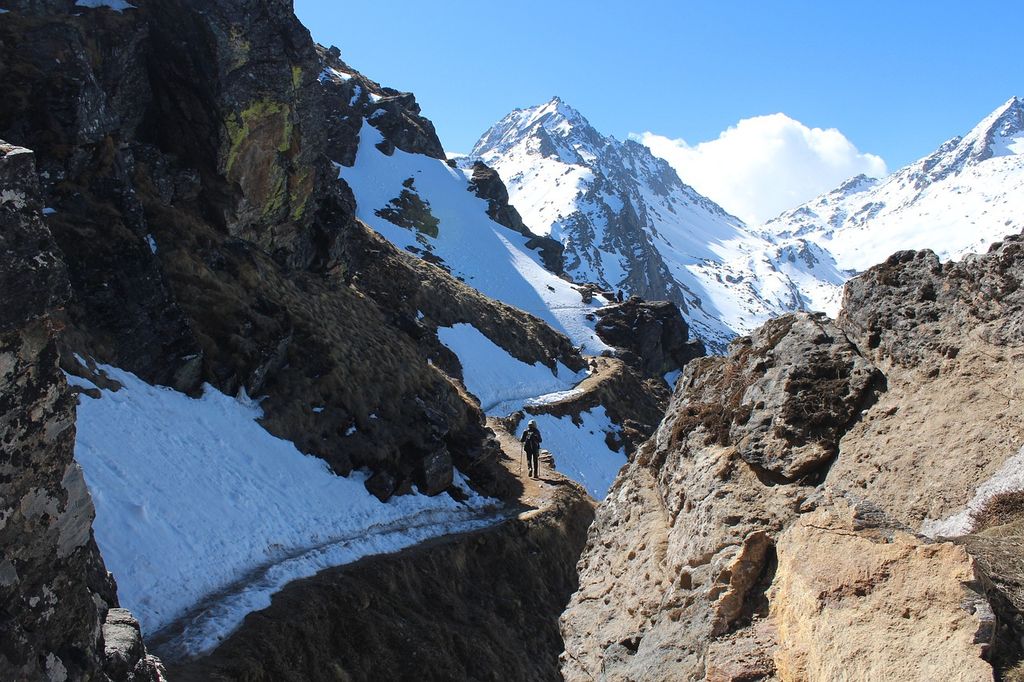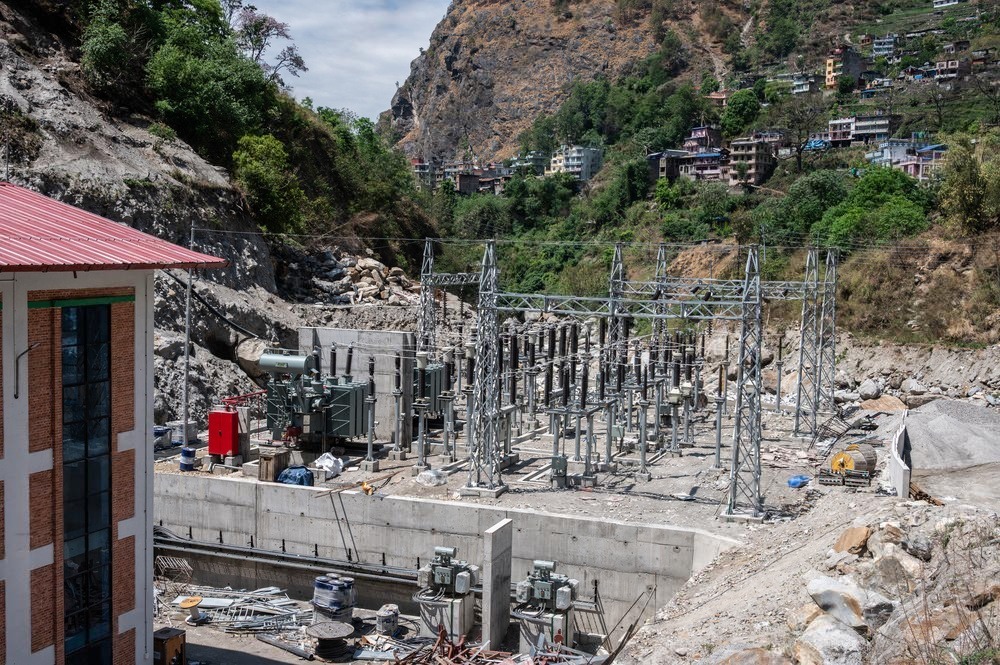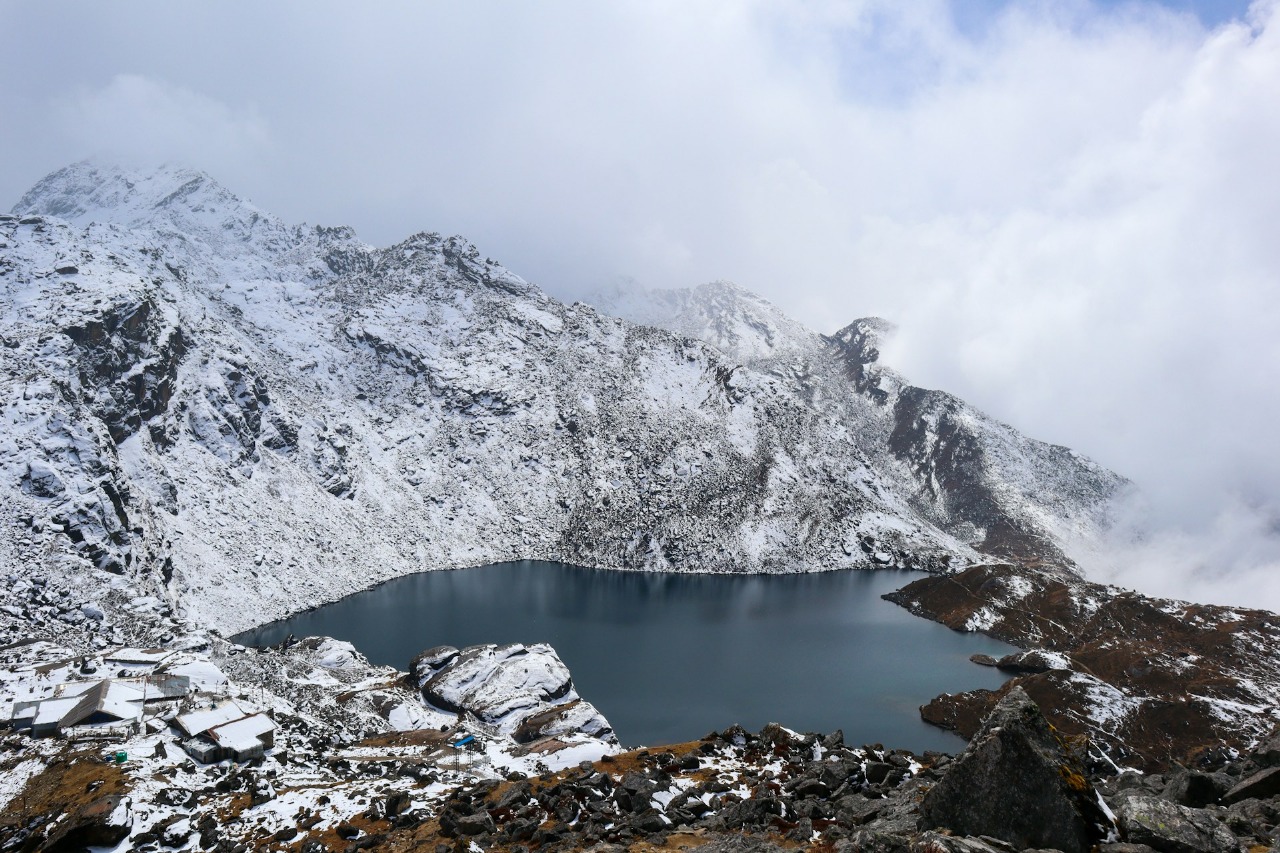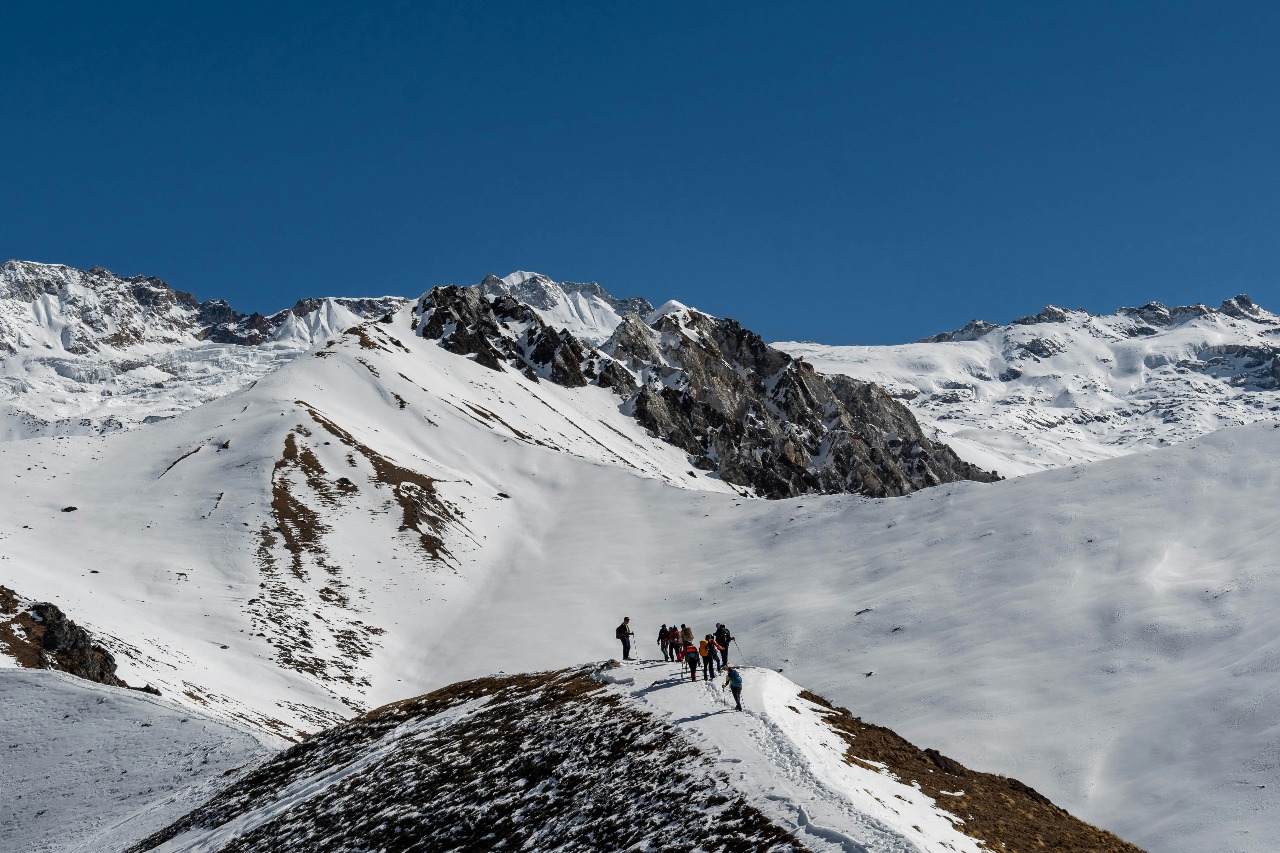Langtang Valley

About
Langtang Valley, known as the “Valley of Glaciers,” is a serene Himalayan destination just north of Kathmandu within Langtang National Park. Surrounded by snow-capped peaks like Langtang Lirung and Dorje Lakpa, lush forests, glacial rivers, and traditional Tamang villages, it offers a perfect blend of natural beauty, culture, and adventure.
Trekkers can explore Kyanjin Gompa, alpine meadows, Langtang Lirung Glacier, and sacred lakes like Gosaikunda and Panch Pokhari. The valley provides opportunities for trekking, hiking, wildlife spotting, cultural experiences, and eco-tourism. Less crowded than Everest or Annapurna regions, Langtang Valley offers an authentic Himalayan experience with breathtaking landscapes, spiritual charm, and warm local hospitality.
Locate Us
Nearby Attractions
Langtang Valley, often referred to as the “Valley of Glaciers,” is one of Nepal’s most serene and captivating Himalayan destinations. Located north of Kathmandu in Rasuwa District, this valley lies within the Langtang National Park, Nepal’s first Himalayan national park. It is renowned for its stunning landscapes, snow-capped peaks, lush forests, and vibrant Tamang villages. Unlike the more crowded trails of Everest or Annapurna, Langtang offers an authentic trekking experience where visitors can immerse themselves in nature, culture, and spiritual heritage.
The valley is easily accessible from Kathmandu, making it a popular choice for both local and international trekkers. Its peaceful paths, friendly locals, and panoramic Himalayan vistas make Langtang Valley an unforgettable destination. Trekkers often remark on the valley’s unique combination of adventure, tranquility, and cultural richness.
Overview of Langtang Valley
Langtang Valley stretches approximately 35 kilometers north from Syabrubesi, the entry point of the trek. The valley is flanked by towering peaks such as Dorje Lakpa (6,966 m) and Langtang Lirung (7,227 m). The Langtang River flows through the heart of the valley, fed by glaciers from the surrounding peaks. This river not only supports local communities but also nourishes the lush forests and meadows that define the valley’s diverse landscape.
The valley is home to the Tamang people, one of Nepal’s original Tibetan-influenced ethnic groups. Tamang culture, monasteries, traditional houses, and vibrant festivals add a rich cultural layer to the trekking experience. Visitors can witness centuries-old Buddhist traditions, interact with locals, and observe their harmonious lifestyle with nature.
Langtang Valley has gained popularity among trekkers for offering Himalayan experiences comparable to Everest or Annapurna treks but without large crowds. The valley is ideal for travelers seeking authenticity, natural beauty, and moderate trekking challenges.
Geography and Landscape
Langtang Valley’s geography is defined by its elevation, topography, and natural features:
- Langtang River and Glacier: The valley is shaped by glacial activity. The Langtang Glacier feeds the river, creating streams and waterfalls along the trekking route. Trekkers enjoy lush riverside forests, serene water reflections, and glacial formations near Kyanjin.
- Alpine Meadows and High Peaks: Higher elevations reveal alpine meadows filled with endemic shrubs and vibrant wildflowers in summer. Peaks such as Langtang Lirung and Dorje Lakpa dominate the horizon, offering breathtaking vistas for photography and mountaineering enthusiasts.
- Forests and Biodiversity: The valley includes diverse ecosystems ranging from subtropical forests at lower elevations to alpine meadows and nival zones at higher altitudes. Forests of rhododendron, oak, pine, and bamboo provide a habitat for wildlife and a serene trekking environment.
History and Culture
The Tamang community has lived in Langtang Valley for centuries, preserving their Tibetan-influenced heritage. Their lifestyle revolves around agriculture, yak herding, and cheese production. Traditional stone and timber houses, Buddhist monasteries, and prayer flags create a spiritual and cultural landscape that enhances the trekking experience.
- Kyanjin Gompa: This 400-year-old Buddhist monastery is a spiritual center for locals and trekkers. Visitors can observe daily rituals, explore ancient murals, and appreciate the monastery’s tranquil surroundings.
- Festivals: The Tamang celebrate festivals such as Lhosar (Tamang New Year), featuring traditional music, dance, and community gatherings. Trekkers visiting during these periods witness a vibrant cultural celebration.
Langtang Valley is not only a trekking destination but also a cultural corridor connecting Nepal with Tibetan heritage. The valley’s traditions, spiritual practices, and hospitality enrich the overall trekking experience.
Flora and Fauna
Flora:
Langtang Valley supports diverse plant life across different altitudes:
- Subtropical Zone (Below 2,000 m): Sal forests, Schima wallichii, Castanopsis indica, Khair, Sissoo, and bamboo along riverbanks.
- Temperate Zone (2,000–3,000 m): Oak and rhododendron forests dominate, with maple, alder, birch, and blue pine. Spring rhododendron blooms paint the landscape red, pink, and white.
- Subalpine Zone (3,000–4,000 m): Silver fir, birch, rhododendron, and juniper dominate; mosses, lichens, and ferns cover the forest floor.
- Alpine Zone (4,000–5,000 m): Alpine meadows with dwarf rhododendrons, juniper shrubs, and a variety of flowers such as gentians, primulas, poppies, and edelweiss.
- Nival Zone (Above 5,000 m): Limited vegetation; hardy lichens and mosses survive on rocks and ice.
Fauna:
Langtang Valley is home to a variety of mammals, birds, reptiles, and butterflies:
- Mammals: Red panda, Himalayan black bear, Himalayan tahr, musk deer, common leopard, snow leopard, gray wolf, serow, goral, Himalayan pika, and marmot.
- Birds: Himalayan monal, tragopans, snow partridge, Tibetan snowcock, lammergeier, Himalayan griffon, warblers, flycatchers, finches, and woodpeckers.
- Butterflies & Reptiles: Various butterflies at lower elevations; some snakes and lizards inhabit subtropical forests.
Langtang Valley’s rich biodiversity attracts wildlife enthusiasts and promotes ecological research and sustainable tourism.
Trekking Routes and Activities
1. Langtang Valley Trek (Classic Route)
- Starts at Syabrubesi, usually 7–10 days round-trip.
- Passes through Tamang villages, rhododendron forests, and rivers.
- Reaches Kyanjin Gompa and surrounding peaks for panoramic views.
2. Gosaikunda Trek (Optional Side Trip)
- Leads to sacred Gosaikunda Lake, an important Hindu pilgrimage site.
- Popular during Janai Purnima festival.
- Offers high-altitude scenery and cultural experience.
3. Helambu Trek
- Shorter trail with lush forests, terraced fields, and traditional villages.
- Often combined with Langtang Valley Trek for diverse experiences.
Other Activities:
- Cultural Exploration: Visit monasteries, interact with locals, and learn traditions.
- Wildlife Watching: Spot red pandas, Himalayan tahr, and langurs.
- Photography: Capture landscapes, villages, and rhododendron blooms.
- Local Experiences: Taste yak cheese, observe farming, and join local festivals.
Attractions and Highlights Langtang Valley Trek
Kyanjin Gompa
A spiritual hub offering serene views, Buddhist artifacts, and monastery rituals.
Langtang Lirung Glacier
Magnificent glacier under Langtang Lirung peak with stunning ice formations and trekking opportunities.
Langtang Village and Thyangshyap
Traditional villages showcasing Tamang lifestyle, architecture, and farming methods.
Local Cheese Factory
Observe traditional yak cheese production, a unique insight into valley livelihoods.
Tourism and Economy
Tourism is vital to Langtang Valley’s economy. Local Tamang communities benefit from trekking, homestays, guesthouses, shops, guides, and porters. Tourism sustains traditional livelihoods such as yak herding, farming, and cheese production while providing opportunities for education and skills development.
Environmental and Conservation Issues
2015 Earthquake Impact
- Destroyed homes, monasteries, and trekking infrastructure.
- Triggered landslides, river blockages, and habitat loss.
- Recovery efforts focus on community rebuilding and ecosystem restoration.
Conservation Efforts
- Government and NGOs work to preserve alpine meadows, rhododendron forests, and endangered species.
- Awareness campaigns promote sustainable resource usage and wildlife protection.
Responsible Trekking
- Carry out trash and reduce plastic use.
- Use eco-friendly trekking gear.
- Respect wildlife and avoid disturbing habitats.
- Support local businesses and homestays.
Best Time to Visit Langtang Valley
- Spring (March–May): Rhododendron blooms, mild weather, lush greenery.
- Autumn (September–November): Clear skies, panoramic views, harvest season.
- Winter (December–February): Cold with snow at high altitudes; fewer crowds.
- Monsoon (June–August): Frequent rainfall, slippery trails; lush landscapes for photography.
How to Reach Langtang Valley
Route from Kathmandu
- Trek starts from Syabrubesi, accessible via a 6–8 hour drive on Araniko Highway.
- Scenic valleys and towns along the route enhance the journey.
Transportation Options
- Private car or taxi for comfort.
- Tourist/local bus for budget travel.
- Jeep/shared vehicles for faster travel in small groups.
Nearby Attractions of Langtang Valley
Langtang Valley is surrounded by incredible destinations that add more adventure, culture, and scenic beauty to your trek.
Helambu Region

South of Langtang, Helambu is famous for lush forests, terraced hills, and traditional Tamang villages. Known as the “Valley of Honey,” this region offers cultural immersion, rhododendron blooms in spring, and local honey and farming experiences. It’s a great addition to the Langtang Valley trek for a diverse Himalayan adventure.
Rasuwagadhi Border Area

Near the northern edge of Langtang, Rasuwagadhi is a historic site and Nepal-Tibet border checkpoint. Visitors can explore ancient forts, meet Tamang communities, and enjoy panoramic views of the Himalayas. Sunrise and sunset offer breathtaking photography opportunities.
Gosaikunda Lake

A sacred alpine lake northeast of Langtang, Gosaikunda is a pilgrimage site for Hindus and a scenic highlight for trekkers. Its crystal-clear glacial waters and serene environment provide both spiritual and natural beauty.
Langtang Lirung Glacier

Located beneath Langtang Lirung peak, this glacier is ideal for adventure seekers, hikers, and photographers. The dramatic ice formations and surrounding peaks create a mesmerizing landscape.
Panch Pokhari (Five Sacred Lakes)

An off-the-beaten-path destination northeast of Langtang, Panch Pokhari offers tranquility, pristine alpine lakes, and stunning Himalayan views. It’s perfect for trekkers looking for peace and natural beauty.
Tips: Combine Helambu with the Langtang Valley trek for cultural richness, visit Rasuwagadhi for history and Himalayan vistas, and always respect local traditions and the environment.
Frequently Asked Questions (FAQ)
Q1: What is the best time for Langtang Valley Trek?
A1: Spring (March–May) and Autumn (September–November) are ideal for clear skies, moderate temperatures, and beautiful scenery.
Q2: How long does the trek take?
A2: The classic Langtang Valley Trek usually takes 7–10 days round-trip, depending on fitness and pace.
Q3: Is it suitable for beginners?
A3: Yes, the trek is moderately challenging and ideal for beginners with basic fitness.
Q4: What permits are required?
A4: Trekkers need TIMS (Trekkers’ Information Management System) card and Langtang National Park entry permit.
Q5: Can Gosaikunda Lake be visited as a side trip?
A5: Yes, Gosaikunda can be accessed via a scenic extension from the Langtang Valley Trek and is a popular pilgrimage site.
Conclusion
Langtang Valley is a Himalayan gem that combines adventure, culture, and natural beauty. From snow-capped peaks and alpine meadows to spiritual monasteries and vibrant Tamang culture, it offers a truly immersive experience. Despite challenges such as the 2015 earthquake, the valley has recovered, welcoming trekkers with breathtaking scenery and authentic Himalayan hospitality. Langtang Valley Trek is perfect for anyone seeking adventure, cultural exploration, and tranquil mountain landscapes.
Plan your Langtang Valley Trek today and experience the Himalayas like never before!